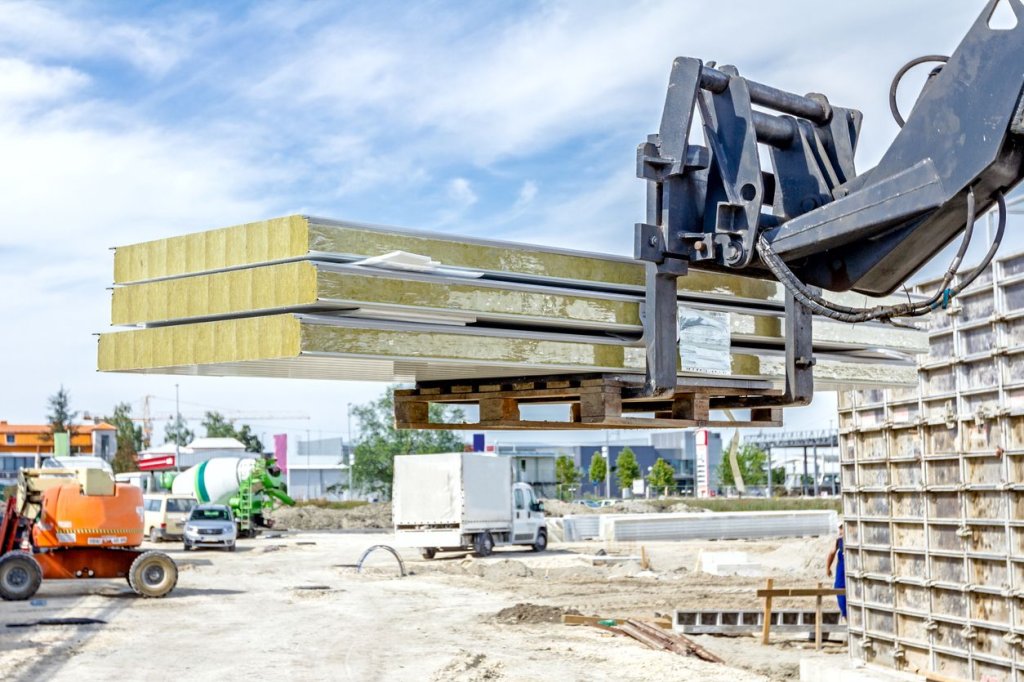Forklift Safety Talk
Forklifts can be found on jobsites of all kinds, from construction sites to warehouses. They are used to move heavy materials. There are two different types of forklifts: riding forklifts and those that are controlled by a walking operator.
Just like all machinery, there are rules and regulations that need to be followed when operating forklifts. Depending on the type of forklift that you are using, the safety protocols may vary, but there are some basic rules that apply to all forklifts.
Taking the proper precautions is not only about the forklift operator's safety, but also the safety of coworkers and pedestrians in and around the work area as well.
Forklift injury and fatality statistics
Forklift accidents happen all too often on jobsites across the country. Thanks to institutions like OSHA and NIOSH, we're able to get data on the frequency and cause of forklift injuries and fatalities. This knowledge can help prevent future incidents.
OSHA forklift fatality statistics
The Occupational Health and Safety Association (OSHA) reports there are about 85 fatalities associated with forklift accidents each year. One of the biggest risks of fatalities from forklifts is operating the forklift on uneven ground or having an uneven load, which may cause the machine to tip over.
OSHA forklift injury statistics
Annually, OSHA receives over 34,000 reports of injuries due to forklifts. This number includes both injuries to forklift operators and bystanders.
NIOSH forklift fatality research
The National Institute for Occupational Safety and Health (NIOSH) specializes in helping to prevent fatalities and injuries on the worksite. They research safety incidents, like forklift accidents, to determine common causes.
Over a period of 14 years, they recorded and investigated 1,024 fatal incidents that happened with forklifts, reporting the breakdown of causes:
9% of people fell from the forklift
16% of people were crushed by the forklift
20% of people were struck by a forklift
22% of people were killed by an overturned forklift

Forklift safety practices
Making sure that everyone is aware of forklift safety precautions and regulations that need to be followed can make the jobsite safer. There is a risk of injury for everyone onsite, so it's everyone's responsibility to help avoid unnecessary accidents.
Having workers complete a Forklift Safety Checklist is a great way to make sure proper safety procedures are followed.
Before operating or working with a forklift, review the following tips.
1. Avoid crowded areas
Crowded work areas make for dangerous situations. Workers who are in the work area when a forklift is being used are at risk of being struck by the forklift, pinned between the forklift and another surface, or injured by falling materials.
For pedestrian safety, it is best to make sure that the worksite is clearly and securely blocked off.
2. Watch the weight of the load
When the forklift is loaded, it's important to make sure that the load is even and you do not go over the forklift's weight limit. Hauling uneven loads or loads that are too heavy can cause the forklift to tip over, or the load may fall off and strike someone.
3. Watch the fork height
The forks of the forklift machine should be as low to the ground as they can be, especially when you aren't carrying a load.
4. Watch your speed
There is no reason to speed when operating a forklift. Going slow and steady is safest for everyone involved. That way you can be more aware of your surroundings.
5. Stay on even ground
Uneven grounds are the most common reason for forklift tip-overs. Make sure that you are paying attention to the ground level that you are working on.
The load that you are carrying will determine how well the forklift travels on uneven grounds as well.
6. Use the seatbelt
Safety belts should always be worn when you are operating a moving vehicle of any kind. Forklifts are no exception to that rule.
Anyone who is operating a forklift should always have the seatbelt on and buckled for their safety.
7. Stay put when tipping over
When you are in a forklift and it begins to tip, your first instinct may be to jump out. This is actually more dangerous than staying put. You risk slipping or not jumping far enough and getting stuck under the equipment.
The best thing to do is to stay put and brace yourself as best you can.
8. Only operate if qualified
There are licenses and qualifications that you need to operate heavy machinery. These courses teach you the correct usage and safety guidelines to operate forklifts and other machinery.
It is important that when you are on a job site, that you only operate machinery that you are authorized to use.
Find and schedule topics faster
Raken's toolbox talk app makes it easy to choose from a pre-loaded library (or upload your own), then schedule and assign topics for any project. We'd love to show you how in a demo and get you started on a free trial.